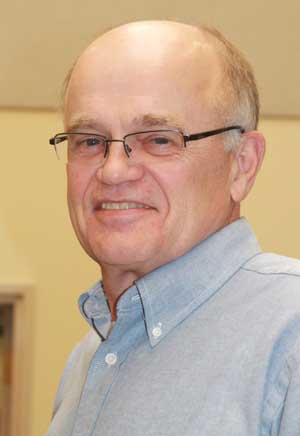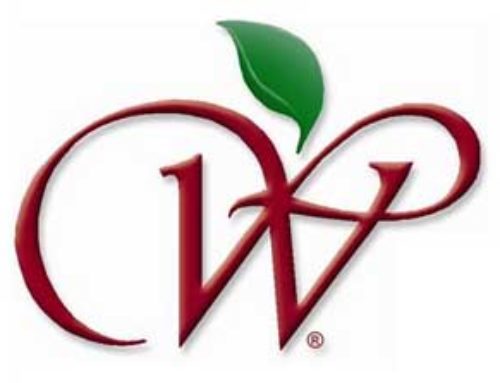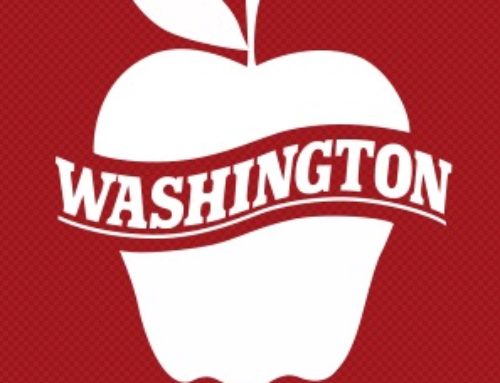
Kirk Mayer
Board members of the Washington Growers Clearing House will hold their last meeting of the association’s 73-year history in August.
In a mail ballot, its members overwhelmingly approved the board’s recommendation to dissolve the association and consolidate with other industry groups to form the new Washington Tree Fruit Association. More than 90 percent of members voting favored the consolidation, which will take effect September 1.
The boards of the other parties in the consolidation—the Washington State Horticultural Association, Yakima Valley Growers-Shippers, and Wenatchee Valley Traffic Association—had already announced their intent to merge. Who will manage the new association will be decided by a committee of members of a transition board.
“We’re done. We’re in the game. Our chips are on the table,” said Charlie Pomianek, manager of the Traffic Association, whose board met June 11, the day before the Clearing House met and announced its decision.
A Tree Fruit Consolidation Task Force has been working for two years to merge four industry entities to gain efficiencies and avoid duplication of efforts. The Clearing House is forming a transition committee to wrap up the association’s business, develop severance packages for staff who are not hired by the new organization, and disperse the association’s assets.
Mixed emotions
“I have mixed emotions because the Clearing House has been serving growers and the tree fruit industry for 73 years so you hate to see it go,” said Kirk Mayer, who’s been on the Clearing House staff for 41 years and has been manager since 1997. “But I think the Task Force, including the Clearing House members on it, was able to put together a good proposal to continue the current services provided by the four associations. With a 93-percent approval rating, the proposal was seen as something that our growers could support.”
One of the most visible functions of the Clearing House has been the weekly “yellow sheet” that it sends out to about 2,000 growers and industry people.
The bulletin includes data on fruit movement and pricing along with crop-related news. The association also provides a year-end price summary to help growers in their decision making and planning.
In addition, the Clearing House represents growers on regulatory issues, particularly relating to labor, and collaborates with the Farm Bureau and the Washington Growers League. It encourages growers to be active in regulatory and legislative matters.
The Growers Clearing House was formed in 1941 when the tree fruit industry was facing tremendous economic challenges and growers were walking away from their orchards because they were no longer financially viable.
Industry leaders asked the federal government for assistance, but the government decided to study the situation first to find out how best to address the problems, Mayer recounted.
“A lot of growers were selling for cash,” he said. “The cash buyer would negotiate with the grower and buy their entire crop. The grower didn’t know the value to the crop so often they did not fare very well in the negotiations.”
Once the Clearing House was formed to keep growers informed about pricing trends (among other functions), the government provided financial assistance to the industry. Membership of the association was voluntary.
The association is closing during a period of good grower returns.
“We’re going through some easy years, so that the growers and industry probably aren’t utilizing their associations as much as they would if things were bad,” Mayer said. “They’re not reaching out to the associations and not attending as many meetings as when the economic situation was a lot worse, but I would think, by having a consolidated association, they might be a little bit better prepared to address those issues in the future. Time will tell.”
West Mathison, who heads the Washington Tree Fruit Association transition board, said the consolidation task force did a tremendous job of focusing on doing what’s best for the industry and none of the groups tried to railroad the process in any one direction.
“I feel the Task Force did an excellent job of creating the best solution for the industry,” he said.
The transition board will provide leadership for the new organization until a new board is elected during the annual educational meeting in December in the Tri-Cities.
Mathison said he has no doubt at all that the new association will be operating by September 1, though the existing organizations might continue to function beyond that date to transition their responsibilities and wrap up their books.
The transition board has set up a committee to select an executive director, who will be in charge of staffing. The position has been advertised and the committee has received applications. Mathison could not give a target starting date. “We’re going to try to go as fast as possible,” he said.
Members of the transition board are: Mark Stennes, Sam Godwin, David Smeltzer, Steve Zediker, Jeff Cleveringa, Jon Allegria, Peter Verbrugge, and Mathison.






Leave A Comment